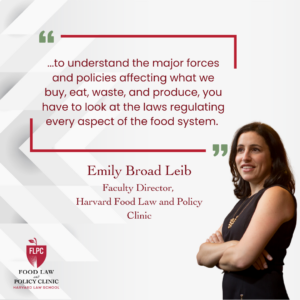Originally published by Phoenix New Times on September 18, 2019. Written by Lauren Cusimano.
The idea of feeding animals, domestic or otherwise, our uneaten food is not new. It is, most likely, better understood, that our domestic pets are not four-legged garbage disposals, but there are ways to treat yard animals and neighborhood pets to food scraps that might otherwise become food waste. That is, if it’s done safely and lawfully.
Our good pals at the U.S. Environmental Protection Agency have a section about reducing wasted food by feeding animals. Feeding animals is high, in fact, the third tier, of EPA’s Food Recovery Hierarchy — an inverted pyramid of actions organizations can take to prevent and divert wasted food.
“With proper and safe handling, anyone can donate food scraps to animals,” the EPA website reads. That’s followed by, “There are many opportunities to feed animals, help the environment, and reduce costs.”
According to a Natural Resources Defense Council report, “Wasted: How America Is Losing Up to 40 Percent of Its Food From Farm to Fork to Landfill,” we all need to find potential secondary uses for food trimmings and peels. “Trimmings and peels contain nutrition and should be considered for their value,” the report says. “A concerted effort should be made for scraps and by-products to go to their highest use — as other food products, if possible, or as animal feed, compost, or energy feedstock.”
So, if you or someone you love has a desert tortoise, or some other fun backyard animals, they might appreciate your kitchen scraps. And spoiler, those scraps will have to mostly be vegetable trimmings.
But first, I am by no means an expert on animals. However, I have talked to some people who know the score for this story. What it comes down to is what you can feed animals food you’re otherwise not going to eat that will be safe and healthy.
Some History
The report “Leftovers for Livestock: A Legal Guide for Using Excess Food as Animal Feed” was put together by the Harvard Food Law and Policy Clinic and the Food Recovery Project at the University of Arkansas. It starts, cruelly enough, with the fact that the United States wastes approximately 160 billion pounds of food each year. The guide shoots to encourage the appropriate and lawful diversion of food scraps to animals, but if comes with a bit of a history lesson slash warning.
Apparently, “the practice of feeding food scraps to animals has declined precipitously since the 1980s, when several disease outbreaks were linked to animal feed (specifically, animal products in livestock feed), including foot-and-mouth disease in swine and bovine spongiform encephalopathy (BSE), commonly referred to as mad cow disease, in cattle. In an attempt to prevent the spread of such diseases, federal and state laws and regulations that restricted what is often pejoratively referred to as ‘garbage feeding’ were enacted.”
The decline was contributed to overcorrecting the practice of feeding leftovers to livestock. Therefore, the report goes on (for another 60 pages) on how, “Using food scraps as animal feed in a safe, resource-efficient way can be an environmentally friendly and energy-efficient alternative with multiple benefits for farm and food businesses, consumers, and communities.”
Dogs, Cats, and Other Domestic Guys
Veterinarian James H. Maciulla — or Jim — is an associate dean at the University of Arizona College of Veterinary Medicine. He says dogs are prone to multiple problems (pancreatitis, colitis, gastroenteritis) from leftovers.
“This is due in large part to the high fat and protein content, and the inability for the dog’s gastrointestinal system to accommodate the deviation from a commercially produced ration,” he says via email. “Food scraps like vegetable trimmings in judicious amounts (10 percent or less of total intake) are generally okay.”
In other words, domestic pets like cats, dogs, birds, reptiles, etc., may take in some vegetable scraps, but not much else.
Desert Tortoises
The Arizona Game and Fish Department offers some helpful information on the captive desert tortoise diet. The AFGFD site states desert tortoises are completely herbivorous, and even a captive tortoise should be allowed to graze on grasses, leafy plants, and flowers, as those foods meet tortoises’ nutritional needs.
But rest easy, many tortoise owners probably don’t have favorites dichondra, hibiscus, wild grape, mulberry, and globemallow blooming in their backyards. In this case, produce will do — but not just any produce.
“Produce can serve as a supplemental food source if you are unable to establish plants within the enclosure,” it reads. “Dark greens rich in minerals and vitamins such as collard, kale, mustard greens, turnip greens, cilantro and parsley can be offered as a short-term alternative or as a supplement to grasses.”
This should all be cleaned, certainly not rotten, and chopped into small pieces. And much like for humans, iceberg lettuce provides little nutrition and should be avoided entirely — according to the AFGFD.
Restaurant owners are free to do this, too.
Lori Hassler, owner of Farish House, which opened in February 2019, found a tortoise upside down on her back porch. “It was only about this big,” she says, cupping her hands. “Now he’s this big,” she says, circling her arms in front like she’s carrying a giant pumpkin.
Hassler took it to her neighbor, who she knew had a breeding of tortoises, and said, “I think this is yours, and instead of taking it back she said, ‘Here, have another one.’” Now, Sandy Sam and Lollipop Sugarface (a 6-year-old had the honor of naming them) have free roam of the backyard at Hassler’s ranch-style Arcadia home.
“They are really cool pets,” Hassler says. “It’s like having little dinosaurs in your backyard.”
Sometimes they forage around the backyard, but they often eat vegetable scraps from Hassler’s own kitchen and from Farish House. There’s even a designated tortoise bin.
The little bin in the walk-in refrigerator will collect wilted radicchio, trimmings from endive leaves, arugula, but no romaine or iceberg lettuce. And on special occasions, “They love hibiscus flowers, that’s like a treat or candy,” Hassler says. “And a little piece of fruit here and there.” That checks out with the AFGFD, which says fruits should only be offered as a special treat.
This is all a happy coincidence, as reducing food waste is an important issue to Hassler personally, who says waste is minimal at Farish House. “You want to make use of everything,” she says, “and I think that’s a classic cooking ethic.”
Pigs
“Raw scraps fed to pigs carries significant zoonotic risk,” Maciulla says.
To remedy this, pigs get their own act. On this subject, the EPA states, “Be sure you know how to handle your food scraps properly. Refer to the Swine Health Protection Act.” I’ll let you root through that on your own.
The EPA also recommends the report, “Leftovers for Livestock: A Legal Guide for Using Excess Food as Animal Feed.” The 60-plus-page document describes different federal and state laws, regulations, and requirements for feeding food scraps to animals.
“Arizona allows the feeding of animal-derived waste to swine provided that it has been properly heat-treated and fed by a licensed facility. All other waste may be fed to swine without heat-treatment,” it reads. “Individuals may feed household garbage to their own swine without heat-treating it and without a permit.”
Chickens
Oh, the dream. A backyard full of chickens. Fresh eggs — not those sweatshop eggs. And, they can munch on some of those cucumber butts or uneaten broccoli stems. But again, there can be too much of a good thing.
“Poultry tend to do well with vegetable scraps, again in judicious amounts,” Maciulla says.
Goats
Freelance writer and large-animal veterinarian Christy Corp-Minamiji wrote a 2018 article about feeding goats. The overall message: Goats “cannot ‘eat anything.’ In the broadest designation, goats are herbivores. Translation: they eat plants, not tin cans; not animal products; and not Twinkies.” Turns out goats are fascinating, beautifully complicated creatures. Give “Nutrition for Goats” — written by Corp-Minamiji — a read for further information.
Goats can, however, eat bread. Though, as with most things, not a ton.
A recent article from The Spruce, “How to Feed and Tend Goats on the Small Farm,” has a small section on kitchen and garden scraps. “Raisins and corn chips, just a few, or a slice of bread, make nice treats for goats but don’t overdo them,” it reads.
Ducks
The staple animal of the neighborhood park, ducks usually take down whatever bread products we have sitting in the pantry. Instead of tossing that mostly empty, twist-tied bag of bread in the trash, people usually visited the nearest pond.
However, that’s apparently wrong.
Maciulla can weigh in on this, too. He says overall, bread is no good for ducks. It’s not a natural feed, and is prone to cause crop impactions on the animals.
In addition to this, a simple Google search pulls up enough information to back up almost any version of this claim. But a palatable piece from Popular Science breaks it down pretty well. In summation, bread is junk food (sounds familiar?), and you don’t want ducks filling up on something without nutritional value.
However, certain kinds of food scraps are A-okay. The list includes kale and lettuce, corn, peas, seeds, and oats.
So, Pretty Much Just Vegetable Scraps … Maybe
Overall, I found that sensible amounts of vegetable scraps can be tossed to our animal friends. That and the occasional piece of bread or fruit as a treat.
A final note: This is not a guide of what food scraps you should or should not feed your animals. This is more of a collection of my findings, and a conversation starter.
Before you do anything, please be sure to speak with your veterinarian.


Health Law & Policy, Commentary
Braidwood Management v. Becerra: Updated FAQs for Health Advocates and Providers
July 22, 2024